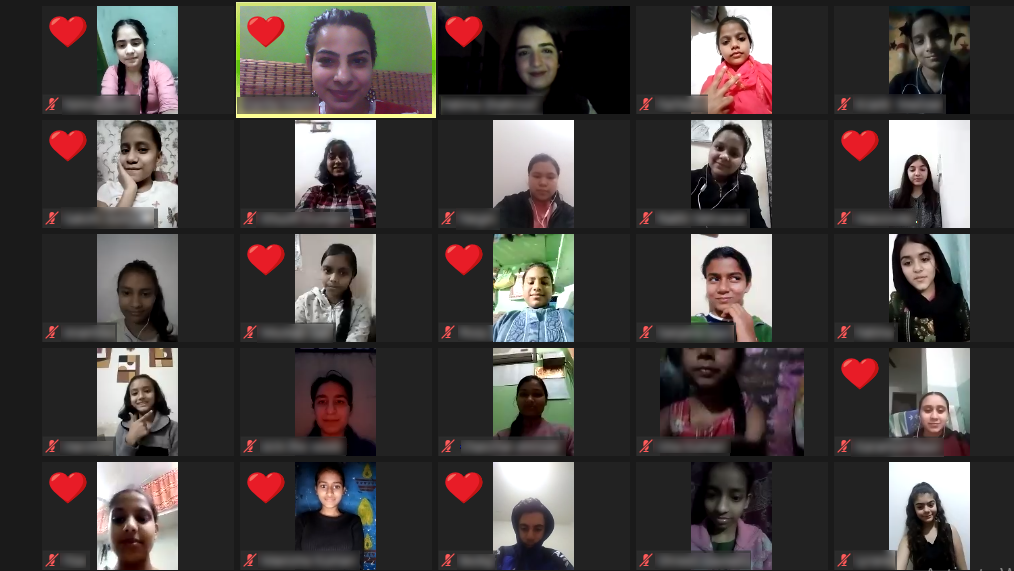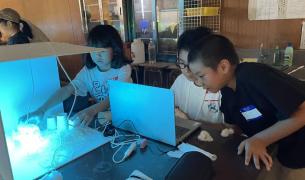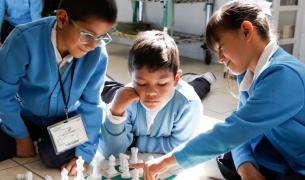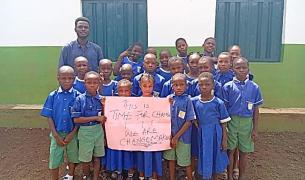A Cross-border Collaboration Between Students and Teachers

Joshi, Grade 8 student, India
During this pandemic and the limited face-to-face encounters, students need a reminder of how connected the world is and an opportunity to explore different cultures they know little about. Often, students forget that we are all similar in one way or another, and that language, distance, and cultural barriers can all be overcome if we learn how to effectively collaborate with each other.
In January, Kavita, a Teach For India Fellow, reached out to Teach For Lebanon and proposed the idea of creating a virtual exchange between students in the two countries. It wasn’t long before 26 fellows from both organizations and more than 330 students were involved with the project. Our expectations were high as we contemplated the journey we were embarking on. We didn’t yet know that the experience lived up to these expectations—and even exceeded them—as not only did the students learn throughout the project, but we as collaborating fellows became good friends as well.
The first project in the exchange was developed by the two of us—Kavita from Teach For India and Fatima from Teach For Lebanon. It consisted of four themed weeks: Introductions, Culture Exchange, Teach Me Your Language (Hindi/Arabic), and finally Global Solutions. For the first three weeks, students had fun learning about each other's countries and exploring the beauty of the rich cultures of India and Lebanon. They paired up in the third week and taught each other common expressions in Arabic and Hindi, and discovered that language doesn’t have to be a barrier to collaboration, as the true universal language is kindness and support. “I found out that many Indians share the same interests as me so we quickly bonded,” explained Ciel Ouligian, a Grade 9 student in Lebanon. “It made me happy.”
Kavita Malik
Our students grew emotionally and showed great levels of empathy, but that was not all. For the fourth week, we wanted to go beyond simply discussing culture and tackle the role of students as global leaders and future changemakers. In groups, they collaborated on identifying global problems that the two countries have in common and finding solutions they can start implementing to make the world a better place. The results were mind-blowing.
What surprised us most was how empowering this experience was for the students. In a survey presented after the collaboration, 90% of the students gave the experience a full 3-star rating while emphasizing that they learned a lot, made new friends, and shifted their perspective towards connectivity and taking action to address global problems. One student expressed how she never thought thoroughly about the gravity of the problems we discussed, and was suprised by the similarity of the solutions they came up with to issues like gender inequality, child labor, and climate change that both countries face.
Whenever a stereotype was cleared, a new word in a different language was learned, or the students realized, even for a short second, how similar they are and how powerful this knowledge makes them, we knew that we met the true objective of our collaboration. As educators we believe we have to expose students to the realities of the world and prepare them to be global leaders, and that cannot happen if we confine their education to the four walls of a classroom, even if there is a pandemic. “As fellows, we initially thought that we would need to push our kids to interact with each other,” shared Teach For India Fellow Aishwarya Singh. “But we woke up to 500 messages exchanged amongst students, wherein they drove conversations around food, music, dance, movies, family values, dressing styles, and places to visit.”
Fatima Shahrour
Fellows from both network partners also benefited a great deal from the project, as it both reminded us of the beauty of collaborations and teamwork among fellows and gave us the chance to build relationships across borders with incredible people who share our vision of making the world a better place for our students.
And as for us, two strangers from Lebanon and India, the only thing we thought we had in common was our role as educators at our Teach For All organizations. But then, after weeks of collaboration, we realized that we share so much more—visions, missions, and the passion to keep learning and empowering others and ourselves every day—which sparked our new friendship. And to us, this is the true meaning of collaboration. To learn and to give.



